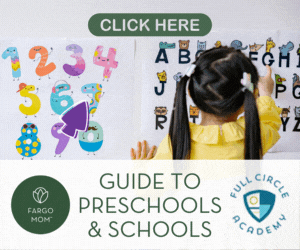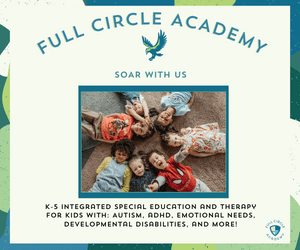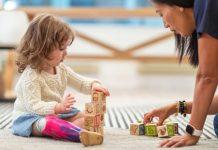Disclaimer: I am not a mental health professional or child welfare expert, but I am a mom who is passionate about this topic and want to help educate others. Please use the resources listed in this article for more information.
Child sexual abuse, grooming, and pedophilia. These are not fun topics or discussions. It is so much easier to pretend we don’t need to talk about these things or learn about them. We think these issues are tragic, but they happen to other people… until it happens to you or someone you know and love.
It happens to a young boy abused by an uncle during a family visit.
Or when a little girl is lured away by a teenager while being babysat by another group of kids.
It happens to a young girl at a sleep over when her friend’s brother crawls into her sleeping bag…
And their life changes forever.
Start with the Facts
So, let’s start with some facts. One in 10 children will be sexually abused. Nearly 94% of them will be abused by someone they KNOW. Let that sink in. Does your child have 10 friends or classmates? Which sweet little face could be one of those statistics?
Many people envision girls being abused by a strange man. But the truth is, this happens to many boys, too. Abusers can be men, women, and even minors (yes, other children). These abusers are people they know; many times people they trust and people they love.
These are sobering statistics.
Believe me, once upon a time this was news to me, too. My heart breaks thinking of these stories, and thinking of my own children. It makes me want to wrap them in a bubble and never let them out of my sight. It makes me sick to my stomach.
Educate Yourself
Learn About Grooming
It often starts with grooming. According to the National (UK) Society for the Prevention of Cruelty to Children, “Grooming is when someone builds a relationship, trust and emotional connection with a child or young person so they can manipulate, exploit and abuse them.”
Grooming can lead to child sexual assault, and even human trafficking. It can take place over a short period of time, or long-term over years. “Groomers” sometimes even build a relationship with the child’s caregivers to gain trust within their circle.
Learn Normal Body Behavior/Terms
We all know kids are curious, especially about the human body. Exploring their own body and being curious about others is usually normal. When behaviors escalate into inappropriate sexual behavior (especially based on their age), that could be cause for concern.
Children should learn the appropriate and correct term for their body parts. When they begin to use advanced sexual terms or slang terms for body parts, it could mean someone is using these words with them.
Other behavioral and emotional signs are listed on the Rape, Abuse & Incest National Network (RAINN) website.
Signs of Child Sexual Abuse
According to Prevent Child Abuse America, warning signs of child sexual assault include regression in bedwetting and/or potty training, self-harm, school difficulties, talking excessively about sex, not wanting to be left alone with other adults, change in eating habits, decreased self-confidence, and more.
For a comprehensive list of behavioral and emotional signs of sexual abuse, visit Prevent Child Abuse America or the Rape, Abuse & Incest National Network (RAINN) website.
Take Precautions
There are some warning signs that an adult could be sexually abusing a child, but these can sometimes be easy to miss or are subtle. Eliminating sleepovers is one precaution to take, as well as watching children closely when together with family members and friends.
Teach kids that they need to tell you about any touches that happen on their body from other people. Kids can’t always tell the intent behind someone’s actions, so it’s up to you to explain (after they tell you) why a touch was OK or not OK. Talk to them about how it made them feel and why it’s not OK.
Using a “code word” with your children can help if they are in an uncomfortable situation that they don’t know how to get out of (but they can’t tell you outright what’s going on). Also, explain the difference between “secrets” and “surprises”: secrets are way to keep information from people that need to know it, but surprises are for fun. Adults shouldn’t be asking children to keep important secrets.
Make sure kids know to never share any personal information online or on their phones. Learn about the apps/programs/messaging they are using, and check the safety and security behind each one.
You can read about these and more tips on child sexual abuse prevention here.
Next Steps
Educate yourself. Tell others you are educated about child sexual assault (we have listed some more resources below). Ask what steps they are taking to protect children from grooming.
Learn the signs of grooming. This can range anywhere from bullying a child to giving them special treats mom and dad don’t. It can be playing “doctor” to confuse body boundaries. Predators can also be very charming and the last person you would suspect of harming a child. No one wants to believe someone they know or love could be a predator.
Have the hard conversations with your kids. The conversations in our home started with online predators and what that can look like. We also got a game called What If Cards and we pull out cards and discuss different situations. This has been a way for us to open up conversations more organically.
Trust your gut. If you or your child is uncomfortable around someone, listen to that instinct. There is a reason for it even if you can’t figure out exactly what that reason is at the time. Teach your children to trust their gut.
If you think your child has been sexually abused, call your local law enforcement and ask to be referred to the Red River Children’s Advocacy Center or see if there is a Children’s Advocacy Center in your area.
This can be an uncomfortable process, but our children are worth it. We can raise awareness about child sexual assault, and can make a difference. Trust me, some of these recommendations and changes were an adjustment for our family. You need to decide what is right for you and your own family. Hopefully, this gives you a place to start.
Local Resources
Red River Children’s Advocacy Center
National Resources
Child Traumatic Stress Network
National Coalition to Prevent Child Sexual Abuse & Exploitation
National Human Trafficking Hotline
Sexual Violence Resource Center
Rape, Abuse & Incest National Network (RAINN)
If you are looking for a counselor in the area, our resource here is a good start.
















